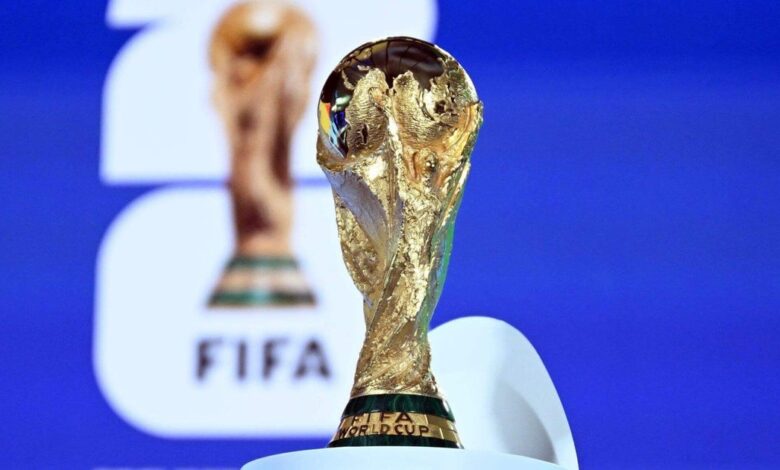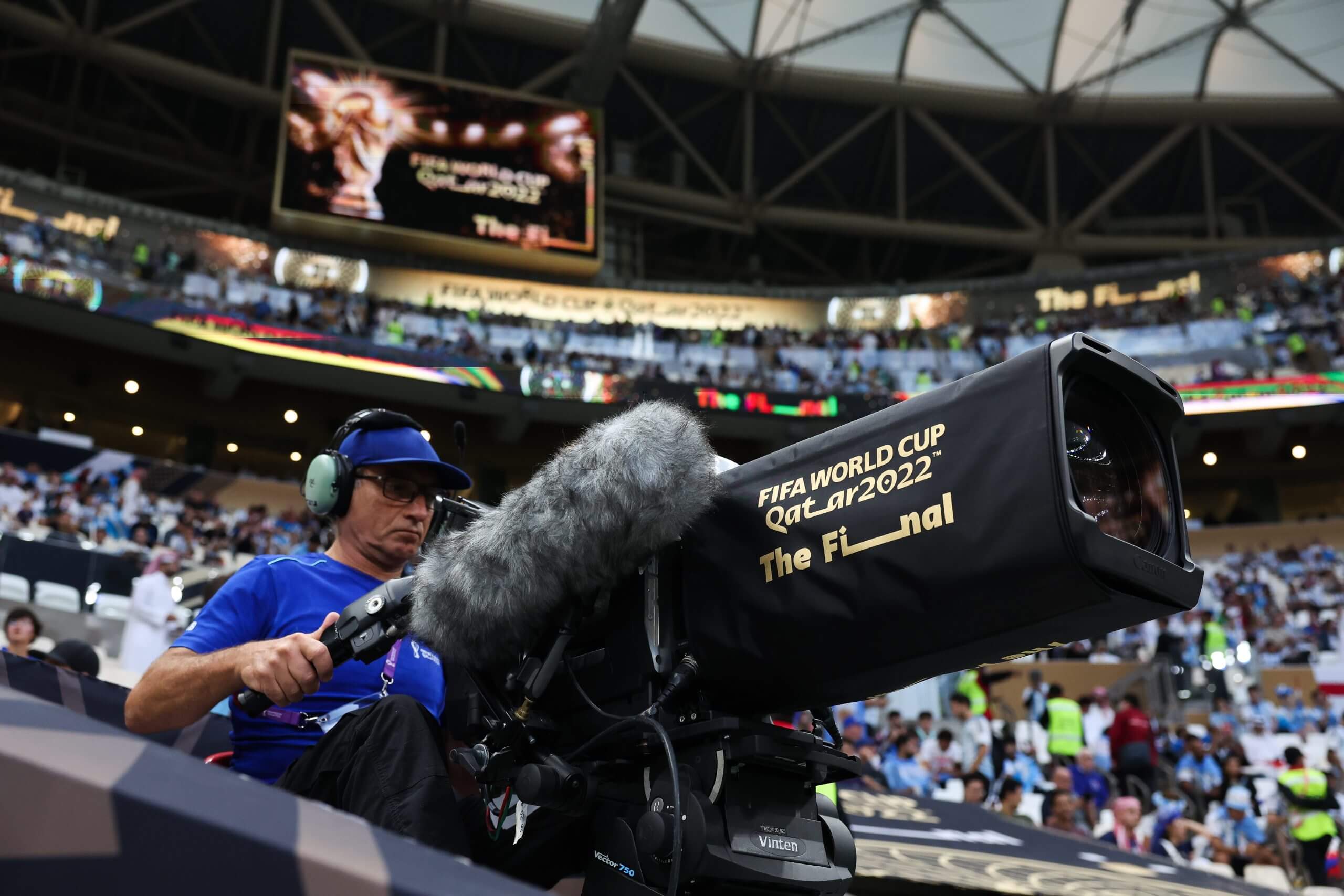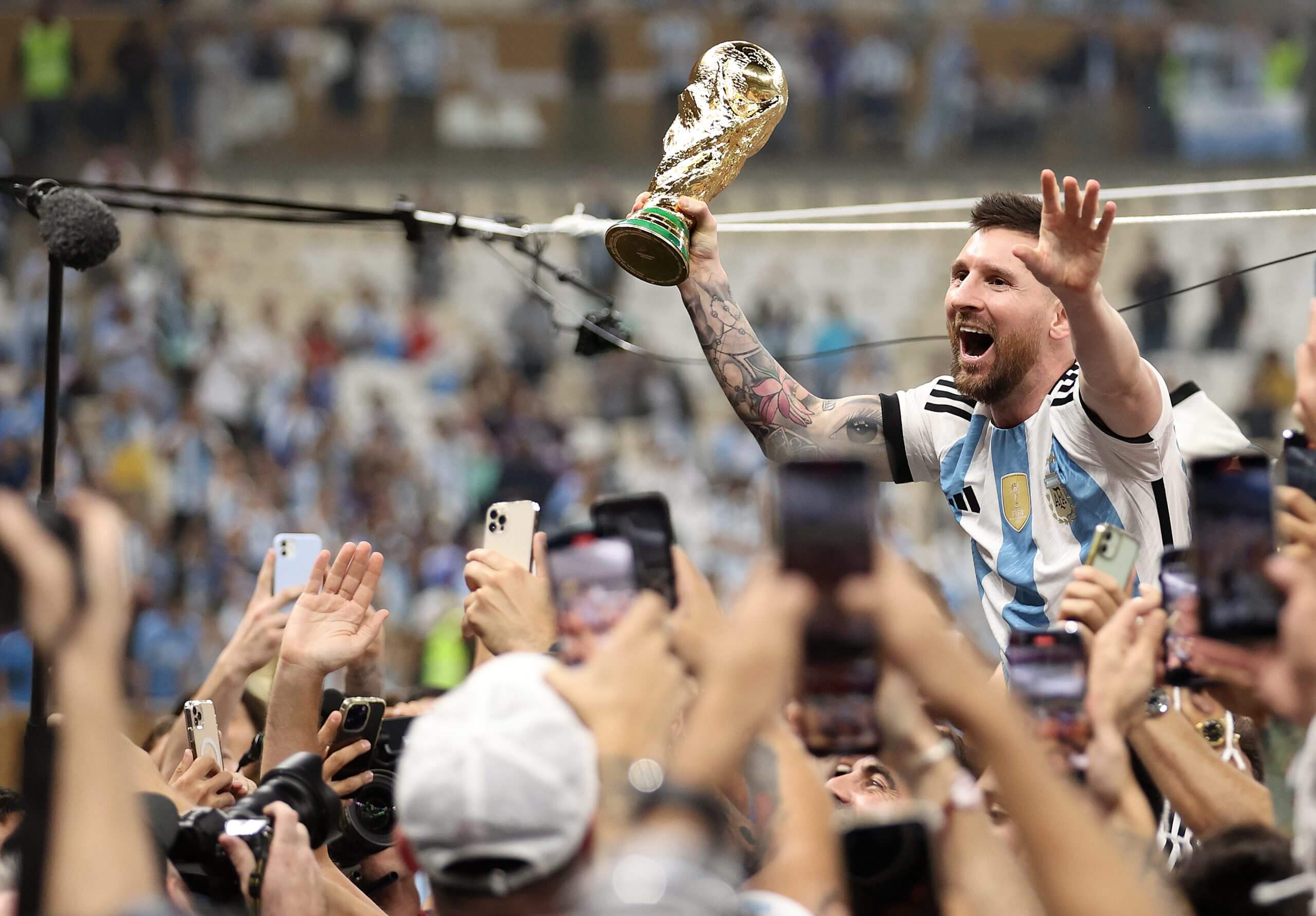Everything you need to know about the 2026 World Cup: What is it? When is it? Who are the favourites?

In 500 days, the men’s 2026 World Cup will get underway in North America. And while June 11, 2026 may feel like a long way off, it is never too early to dust off your vuvuzela and start gearing up for the most highly anticipated football tournament around.
With that in mind, we have answered any burning questions you may have about the competition. Whether you are a newcomer, an old-timer or somewhere in between, here is everything you need to know about next year’s World Cup (just typing those four words gives us goosebumps).
What is the World Cup?
Organised by FIFA, football’s global governing body, the men’s World Cup is a tournament that first began in 1930. The inaugural competition was held in and won by the South American nation of Uruguay.
Since then the tournament has, like the Olympic Games, taken place every four years, although there was no edition held in 1942 or 1946 due to the Second World War.
Where is the next edition being held?
In June 2018, it was announced by FIFA that the United States, Canada and Mexico had been successful in their joint bid to host the 23rd instalment of the competition. Their three-pronged proposal named ‘United 2026’ earned 134 votes. It finished out in front as the clear favourite ahead of Morocco, which earned 65 votes from the 211 FIFA member nations.
Which stadiums will be used?
Sixteen arenas in 16 different cities across the three countries will stage the 2026 run of matches, from the first minute of the group stage to the last kick of the final.
The majority of those stadiums (11) are based in the United States, with the other five in Mexico (three) and Canada (two). Some venues usually used for NFL, CFL or Liga MX games have been given alternative names for the World Cup.
United States
- Atlanta Stadium (Mercedes-Benz Stadium) — Atlanta, Georgia; capacity: 75,000
- Boston Stadium (Gillette Stadium) — Foxborough, Massachusetts; capacity: 65,000
- Dallas Stadium (AT&T Stadium) — Arlington, Texas; capacity: 94,000
- Houston Stadium (NRG Stadium) — Houston, Texas; capacity: 72,000
- Kansas City Stadium (Arrowhead Stadium) — Kansas City, Missouri; capacity: 73,000
- Los Angeles Stadium (SoFi Stadium) — Inglewood, California; capacity: 70,000
- Miami Stadium (Hard Rock Stadium) — Miami Gardens, Florida; capacity: 65,000
- New York/New Jersey Stadium (MetLife Stadium) — East Rutherford, New Jersey; capacity: 82,500
- Philadelphia Stadium (Lincoln Financial Field) — Philadelphia, Pennsylvania; capacity: 69,000
- San Francisco Bay Area Stadium (Levi’s Stadium) — Santa Clara, California; capacity: 71,000
- Seattle Stadium (Lumen Field) — Seattle, Washington; capacity: 69,000
Mexico
- Estadio Azteca — Coyoacan, Mexico City; capacity: 83,000
- Estadio Monterrey (Estadio BBVA) — Guadalupe, Nuevo Leon; capacity: 53,500
- Estadio Guadalajara (Estadio Akron) — Zapopan, Jalisco; capacity: 48,000
Canada
- Toronto Stadium (BMO Field) — Toronto, Ontario; capacity: 45,000
- BC Place — Vancouver, British Colombia; capacity: 54,000
New York/New Jersey Stadium – commonly known as MetLife Stadium – will host the 2026 World Cup final (Al Bello/Getty Images)
When is it?
The first ball of the tournament will be kicked in Mexico — and potentially by Mexico, should they win the pre-match coin toss, as they host the opening match on June 11 in Mexico City at the historic Estadio Azteca, home to the Mexican national team and Liga MX side Club America.
It’s a stadium with a claim to fame like no other on Earth, having hosted the World Cup final twice — in 1970, won by Pele’s Brazil, and in 1986, when Diego Maradona’s Argentina were the champions.
The group stage will conclude on June 27 and the World Cup’s first ever round of 32 commences the next day. On July 4, the 250th anniversary of Independence Day in the United States, there will be footballing fireworks as the final 16 teams begin fighting it out for a place in the quarter-finals, which start on July 9 and conclude on July 11. The first semi-final will be on July 14, with the other finalists to be discovered the following day.
The final itself will take place at the New York/New Jersey Stadium, a short distance from Manhattan, on July 19, with the third-place play-off, the game nobody really wants to play in, booked in for the previous day in Miami.
What’s new for 2026?
This will be the the first time a World Cup will be hosted by three different countries, but won’t be the last as Morocco, Spain and Portugal follow suit next time in 2030.
Next year’s tournament will also be the biggest World Cup ever, having been expanded to include 48 teams, 16 more than competed last time at Qatar 2022 and in the seven previous tournaments going back to 1998. Increasing how many teams are involved obviously means a greater number of games and fans will enjoy 40 more matches than in 2022 — 104 games in total.
The format has been shaken up, too. In Qatar, there were eight first-round groups consisting of four teams each. In North America, that is set to swell to 12 groups in order to accommodate the influx of teams set to compete. Each group will be made up of four countries, as is traditional, with the top two from each after six round-robin matches advancing into the 32-team knockout stage.

GO DEEPER
The Athletic Football Podcast: Does a 48-team World Cup actually make sense?
How can I watch the 2026 World Cup if I’m in the U.S.?
Way back in 2015, FIFA extended Fox’s deal to broadcast the United States’ English language coverage of the men’s World Cup. Fox had the rights for the 2018 and 2022 editions of the tournament, and will do so again in 2026.
As for Spanish language coverage of the competition, that will be on Telemundo, Universo and Peacock.
And what about if I’m in the UK?
BBC Sport and ITV have already agreed a deal to split the live coverage of the 2026 World Cup across their various TV, audio and digital platforms. The two broadcasters will ensure that the World Cup continues to be free-to-air for those watching in the United Kingdom. The BBC and ITV will divide the first 103 games between them but both will show the final live.

(Alex Livesey – Danehouse/Getty Images)
Have any countries already qualified?
As is traditional for World Cup host nations, Mexico, Canada and the U.S. are in automatically, but the rest of FIFA’s member countries are going to spend the next year and a bit battling it out for the other 45 places in the tournament.
For example, there will be 16 nations from Europe at next year’s competition. Following the group-stage draw for their World Cup qualifiers, which took place in December, the 55 members of European football’s governing body UEFA will begin their 2026 World Cup journeys in March, with the first phase of the qualifying competition concluding in November.
The winners of the 12 initial groups will automatically qualify. The 12 runners-up, plus four of the top-ranked teams from the 2024-25 UEFA Nations League (who failed to finish first or second in their groups in the latter competition), will also have the opportunity to qualify via play-offs in March next year.
There will be nine direct qualifiers from the CAF (Confederation of African Football), eight from the AFC (Asian Football Confederation), six from CONMEBOL (the South American Football Confederation), three from CONCACAF (to accompany the three co-hosts) and one from the OFC (the Oceania Football Confederation), with the final two spots going to the winners of inter-confederation play-offs.
Who won last time?
Footballing superstar Lionel Messi crowned his stellar — albeit it’s ongoing at age 37 — playing career by finally realising his dream of lifting a World Cup title with Argentina three years ago. A firecracker of a final against defending champions France went to extra time and then penalties, and really did have it all.
Kylian Mbappe’s hat-trick (making him only the second player to score three goals in a men’s World Cup final after Geoff Hurst during England’s win in 1966) was enough to take the match, which ended 3-3 and saw Messi score twice, including in extra time, to spot kicks.
But any joy for France ended with Mbappe’s 118th-minute equaliser, as heroics by goalkeeper Emiliano Martinez ensured a 4-2 shootout win for Lionel Scaloni’s Argentina against the 2018 champions, managed in both those World Cups by Didier Deschamps, who had been France captain when they won it in 1998.

GO DEEPER
The inside story of the greatest ever World Cup final
Who are expected to win this time?
With the disclaimer that all of the following need to qualify first, Argentina currently top FIFA’s world rankings, so are likely to be among the favourites to win back-to-back World Cups and add a fourth commemorative star to the team badge on their kits, having also been champions in 1978 and 1986.
France, who are ranked second by FIFA, will be out for revenge after coming so close to retaining their title in Qatar. Spain (the world’s third-best side, according to FIFA) will want to add to their 2024 European Championship success (and their women’s team’s 2023 World Cup triumph) by clinching a second men’s title, after their first in 2010. Will England’s men’s team (ranked fourth) overcome the pressure and add to the trophy they lifted as hosts 60 years earlier?
Another nation who will be desperate to leave their mark in North America will be five-time winners Brazil (no country has lifted more men’s World Cups). The last time a World Cup was held in North America (in the United States in 1994), they won it.
Portugal, the Netherlands, Belgium, Italy and Germany complete the current top 10 of the world’s best footballing nations according to FIFA, so, should they also qualify, they will arrive with their own high hopes. But there will be plenty of outsiders looking to achieve the greatest glory in international football.
Only countries from Europe and South America have won the men’s World Cup over the previous 22 tournaments, with the former just ahead 12 titles to 10. Will 2026 see a first triumph for Africa, Asia, North and Central America and the Caribbean, or Oceania?

Lionel Messi and Argentina will be out to defend the trophy they won in 2022 (Julian Finney/Getty Images)
So when will we know all the teams who made it?
By March 2026, we should have a full roster for each and every one of the 48 sides to have qualified, as well as a completed fixture list with opponents, location and kick-off times to boot.
Is there prize money?
Prize money has not yet been announced by FIFA but will likely inflate from total earnings last time out.
In Qatar, the total prize money for the 32 teams involved was a whopping $440million (£354million). As winners in 2022, Argentina earned $42m, the most a team has ever received for winning a World Cup.
(Top photo: Dursun Aydemir/Anadolu via Getty Images)
Source link




